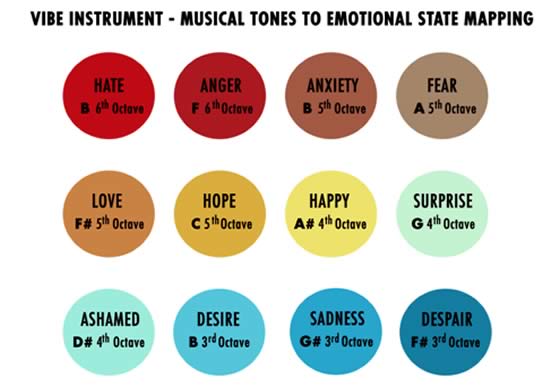Does Your Business Need Audio Branding?

[Guest article by Nitish Sharma]
Is audio branding just for giant brands, or can a business of any size use it to build brand value and customer loyalty? You might be surprised at the answer…
What is Audio Branding?
We all have that one song that immediately stirs some kind of emotion in us, whether it’s sadness, happiness, anger, or something else. Music and other sounds have the ability to induce emotion and significantly impact our mood. For example, nature sounds may relax us while high-tempo punk music may leave us feeling exasperated. So if music and sound have such a significant impact on how we feel, what does it mean for businesses and brands?
In marketing, there’s a term called audio branding (or sonic branding) in which brands use signature sounds or music to express their brand identity. And there’s more to it than iconic jingles and ad music. Audio branding could refer to the memorable Skype connection sound or the grand 20th Century Fox music that plays before the start of certain movies. The main idea is to create a sound or musical signature that consumers can easily associate with your brand.
Benefits of Audio Branding
There are many reasons why businesses and brands place a high value on audio branding. According to the Journal of Brand Management, where Clara Gustafsson surveyed research on on audio branding, the benefits include:
- Creating a memorable brand identity – Original music in advertising is far more memorable than song parodies or original recordings of popular songs. So brands can use audio branding to help consumers remember their brand through signature music regardless of when or where they encounter the music.
- Boosting brand loyalty – Choosing music branding that fits your brand values can positively affect how consumers feel about your brand and may even increase their loyalty towards your brand. On the other hand, using unsuitable music branding could have a negative impact on how consumers perceive your brand.
- Inciting certain emotions in people – Audio branding can help you induce specific emotions in consumers. Whether you want them to feel excited, sad, happy, or nervous; audio can have an impact. A study by Katz Marketing found that the theme music for FOX NFL Football was responsible for inducing excitement and anticipation in people. Moreover, 79% of consumers correctly identified the brand through the sound.
- Impacting people’s moods in retail settings – Since music significantly impacts people’s moods, businesses can use music and sound to create a desired mood and even influence the pace of shoppers in a retail setting. For example, if you want shoppers to browse through your store more slowly, a relaxing tune might be the ideal choice. One case study found that playing gentle and ambient music designed to reduce stress was able to increase retail sales by 10%. The report highlighted how slow-tempo music induces positive responses and enhances people’s waiting experience in low crowd density. But, it had the opposite effect when people were part of a dense crowd. Playing loud music in bars, on the other hand, resulted in people drinking more beer and drinking it faster.
- Impacting people’s willingness to pay – Another study showed that the number of tones that make up an audio logo can have an impact on people’s willingness to pay. In that study, six notes performed better than either three or nine. The scientists attributed the difference to processing fluency.
Do You Need Audio Branding?
The points highlighted above are just some of the multitude of reasons why audio branding could positively or negatively impact consumers’ perception and attitude towards your brand. But you might still be doubtful about whether or not you really need to apply it for your own business. You may need audio branding if:
- Your competitors are building their brand identities through audio.
- You’re planning to be distinctive at every point of contact.
- You have already established your visual identity through logos and colors.
How to Develop Your Audio Identity
Once you’ve decided that you wish to develop an audio identity for your brand, you may come to realize that this isn’t as easy as it seems. You’ll need to start by:
- Identifying what your brand stands for and how you wish to differentiate yourself in ways that will intrigue your customers – peace, nature, youth, excitement, luxury, creativity, reliability, etc. These brand characteristics dcan give you inspiration as to the tunes and tempos that align best with your brand identity.
- Gaining a better understanding about what sounds characterize your competitors and how they’re differentiating themselves. This will help you create sounds that are completely different from what your competitors are doing.
Once you’ve completed these steps, you can make use of the following best practices to develop a sensational and memorable audio brand for your business:
Maintain consistency – If you truly want people to be able to identify and remember your business through sound alone, you need to maintain consistency with your audio branding. This doesn’t mean everything should sound the same but rather you should develop your signature sounds based on iconic core sounds.
A good example is how Nokia regularly updates the Nokia tune every other year. Despite several changes in the type of sound, the tune continues to remain distinctly recognizable. So it’s fresh yet memorable in the ears of consumers.
Similarly, United Airlines has built its audio branding around Gershwin’s Rhapsody in Blue but use many variations on the melody depending on where and how it is used.
Consider your target audience – The type of sound branding that suits your business will also depend on the type of audience you’re planning to target. For example, if you’re targeting a younger audience, will you do better with a more upbeat tempo? And if you’re targeting highly-stressed adults, you might want to consider peaceful and relaxing tunes.
Consider the emotion you wish to induce – Another important factor to consider is the emotion you wish to induce through the audio. This can depend largely on the type of product you sell, your brand values, and your organizational goals. Some brands may do better with happy and hopeful tunes while others may be better off with tunes that induce sadness – all depending on what they sell.
Here’s an interesting chart by The Vibe Experiment on which musical tones can induce certain emotions. Maybe you could opt for a sadness-inducing tone for an emotional ad or a tone that induces hope if you’re creating something inspirational.

Conclusion
It’s clear that businesses of any size can significantly benefit from audio branding – whether it’s to impact customers’ decisions, make a mark in people’s memories, or enhance brand loyalty. Smaller business won’t be able to hire a famous composer to craft a memorable jingle, but just six notes may be enough. Or, instead of music, perhaps a distinctive chirp, chime, or other sound will be effective. Consistency and repetition are the keys to sonic success.
Do you have thoughts or questions about audio branding? Have you tried it, or are you thinking about it? Feel free to leave a comment to share your thoughts.
Audio #branding builds your brand identity and can boost customer #loyalty. #Neuromarketing Click To Tweet


Nitish,
Is this a coincidence… this is Trishia. Are you the same Nitish that also works with L&T. If so, reach out to me regarding this subject of audio branding.
Hi Trishia,
I don’t remember. Which website you are talking about? Please tell me the website.
Hi Nitish, great article. I want to ad that you can incorporate audio branding in your product as well. BMW for instance use these techniques to optimize the sound you hear when closing the car door. They do this to give the user a feeling of safety. The customers who paid a premium for there ride don’t want to hear a ‘cheap’ aluminium sound.